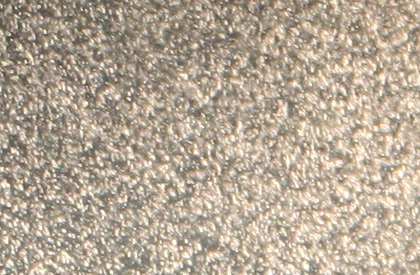 Conventional Aeration
Conventional AerationMost aeration equipment in use today utilizes compressed air systems. They introduce bubbles of air into the water by forcing the compressed air through a fine pore diffuser. Experimental results with these systems have shown that the minimum bubble sizes generated are greater than 3 to 4 millimeters in diameter. Bubbles of this size quickly rise to the surface and are lost. They do not remain in the water long enough to transfer an appreciable amount of oxygen.
WTR Solutions Aeration
The WTR Solutions Aerator, instead of using the compressed air/fine pore system, uses a patented process, Fine Bubble Diffusion, to create bubbles in a partial vacuum. The small bubbles created in this process average 0.25 mm in diameter. The small size of the bubble and the low-pressure gas it holds create a small buoyancy force (The phenomenon which makes bubbles rise in a liquid). This buoyancy force is so small that it is less than the surrounding surface tension of the water. The bubble, in fact, does not rise to the surface, but remains suspended in the fluid. This makes all of the oxygen in the bubble available to be dissolved in the liquid as needed.
The Effect of Bubble Size in Aerobic Aeration
As the total surface area of a population of bubbles increases, oxygen transfer efficiency (OTE) increases. For the same volume of air, many small bubbles have a greater surface area than fewer large bubbles.
Typical compressed air diffusers, which are found in many municipal and industrial waste treatment processes, frequently produce bubbles 20 mm or greater in diameter. These bubbles have a small combined surface area for a given volume pumped, and they also rise to the surface immediately. Advances in fine-pore diffusers have led to the development of aeration systems producing bubbles averaging 3 to 4 mm in diameter. This represents the state of the art in compressed air systems.

Fine Bubble Diffusion and Aerobic Bacteria
It is expected that in the conventional septic tank or waste lagoon the organic waste contained in them is digested. This is not the case - the organic waste builds up over time and the tanks and lagoons are nothing more than containers for sedimentation and sludge storage. The bacteria in normal septic digestion are anaerobic and are accompanied by odorous gases and groundwater contaminating pathogens.
Aerobic Efficiency
By supplying enough oxygen, an aerobic condition is developed. Bacteria that obtain their energy aerobically are much more efficient. The same organic waste food supply supports a much larger bacterial flora by aerobiosis than anaerobiosis, and therefore, aerobic decomposition of organic matter is much more rapid. Aerobiosis in activated sludge is substantially complete in six to eight hours, whereas conventional septic digestion of sewage sludge requires about 60 days.
Nitrification
The usual end products from anaerobic decomposition are carbon dioxide, methane, ammonia, and hydrogen sulfide. The end products of aerobic bacteria are carbon dioxide, ammonia, water, and sulfates. The ammonia is not given off as a gas, replica breitling and is nitrified by the aerobs Nitrosomonas - oxidizing the ammonia into nitrite, and Nitrobacter - oxidizing the nitrite into non-toxic nitrate. Nitrates are directly plant usable and will not harm fish. The only gas given off by aerobic bacteria is odorless carbon dioxide, thereby eliminating any offensive odor.
